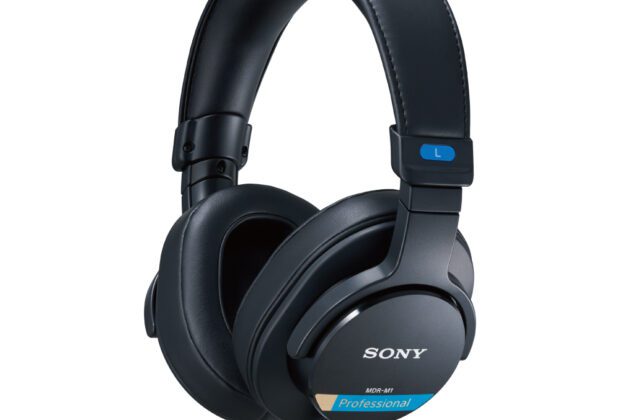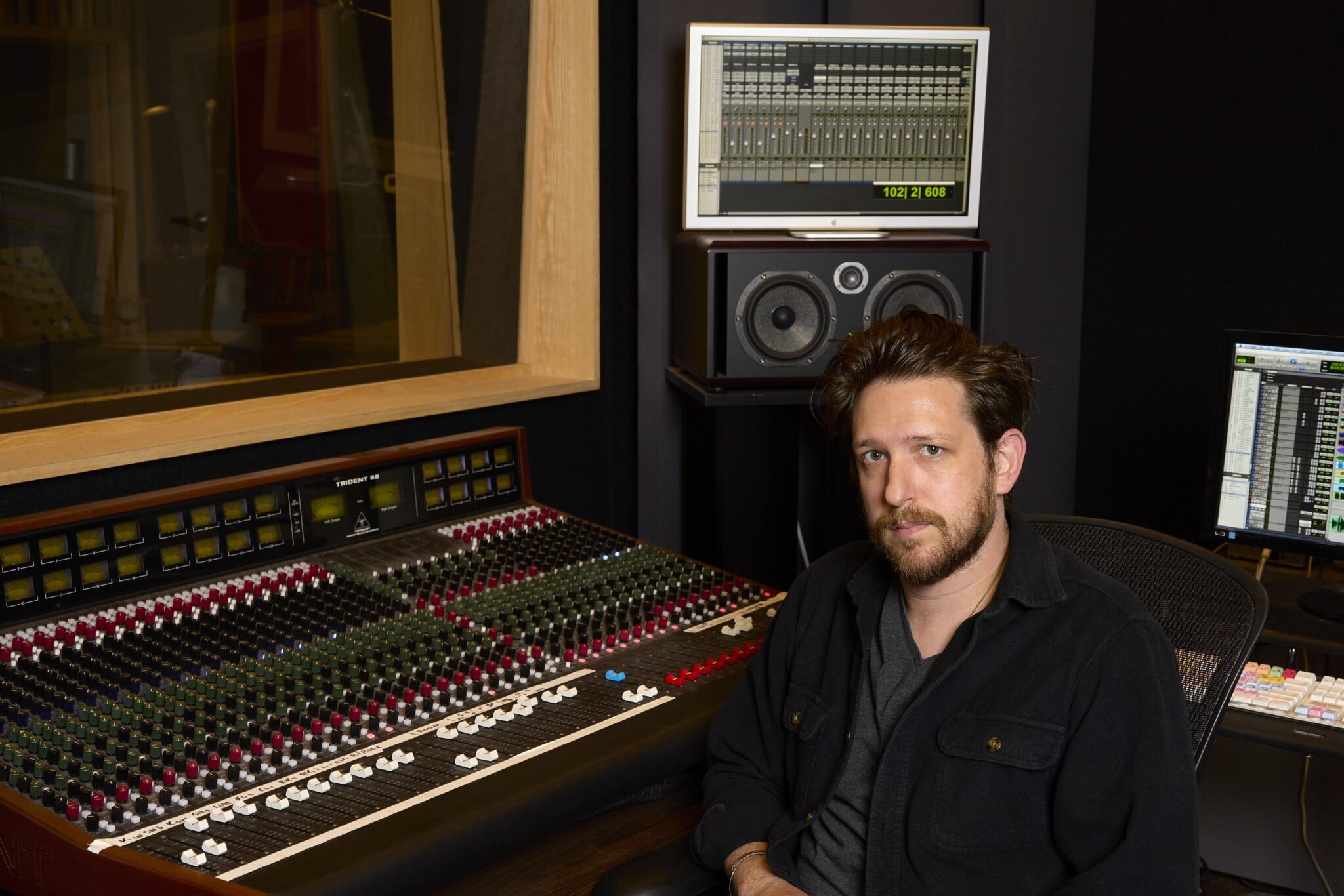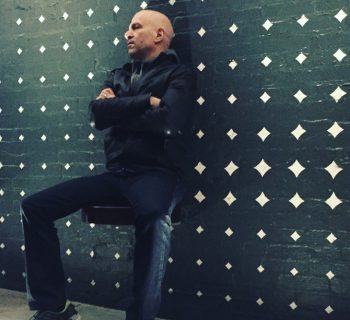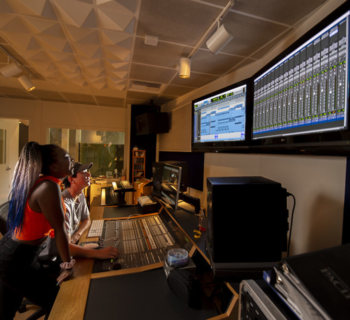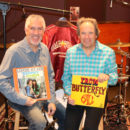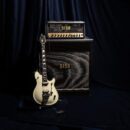Sony Pro Audio’s new MDR-M1 reference closed back monitor headphones feature an ultra-wideband playback dispersion curve that is designed to support many different usage applications that an artist or producer may encounter on a daily basis including tracking, mixing, and singing in front of a studio microphone where open back headphones, because of their sound leakage, are not necessarily the best choice for a lot of situations. The MDR-M1’s have a frequency response from 5kHz to 80kHz, which is the same as Sony’s open MDR-MV-1 open back headphones.
Finding the correct balance of a high degree of isolation is important when you are recording, and the Sony MDR-M1 headphones are designed to eliminate a large percentage of ambient noise and sound leakage in the recording process. When tracking vocals, the music, or whatever the artist is playing or singing along with, the source material needs to be at the correct volume. If it is too quiet, the singer might not project enough and if it is too loud, then sound can leak out of the headphones and make its way into the microphone, causing a hollowing out of the intended vocal capture, and in some cases, can even result in feedback.
The MDR-M1 headphones are designed to allow singers and vocalists to be able to sing out naturally and give all that a song or the performance deserves. The Sony MDR-M1’s are closed back headphones that have a high degree of sound isolation which make them a perfect choice for singing into a microphone when you want the microphone only to pick up the sound coming out of your voice.
Sony has a long legacy of headphone design and making headphones extremely comfortable. When you put the MDR-M1’s on they are like wearing a well-worn pair of jeans. They are so comfortable that it is easy to forget the fact that you are wearing them. Another great feature is that the MVR-M1’s can lie flat making them easier to transport. This is a useful feature if you are, for example, just packing them into the sleeve of your backpack and you’re traveling with them.
Since Sony has a long history of developing headphones, they have amassed a huge database of head shapes and sizes as well as need ear shapes and sizes which allowed Sony to determine the best shape and material for ear pads, headphones, headbands, and the appropriate amount of grab on your head. Sony also extensively used beta testers to give real world feedback in designing the MDR-M1 headphones. The end result is a pair of headphones that are exceptionally comfortable to wear for long recording sessions.
In terms of wearing headphones all day long, the parts and pieces of a headphone to be sufficiently strong to stand up to the abuses of real world use, balancing it with the weight of the headphone when you wear them on your head. In designing the MDR-M1 headphones, Sony was able to reduce the weight of the headphones down to 216 grams while making them strong enough to stand up to real world situations.
If you have the luxury of working in a high-end recording studio control room, you can crank up monitors as loud as you want. Obviously, the application is for headphones engineers to check whatever musicians or singers are actually listening to, checking their own mixes, things like that, however a huge part of the population do not have that luxury. If you live in an apartment, perhaps you can’t track or mix at loud volumes, or maybe you have a spouse that is going to be upset when you are recording too loud at whatever time of the day or night it is. In those cases, you have to do your work with headphones. The MDR-M1’s are comfortable to wear for hours and hours at a time, which is particularly important in a lot of home recording situations.
The MDR-M1s come with two different cables. One is a longer cable, about two and a half meters, and stretches from the left ear cup down to the ground and is perfect for connecting to a headphone distribution amplifier. The headphones also come with a little quarter-inch adapter, like what comes with the MDR7506 headphones. The headphones also come with a short cable, 1.2 meters, for when you are just listening to music on your phone, and you do not want to carry a long cable with you.
A lot of a headphones’ capability is in the design of the diaphragm. The diaphragm must be able to go from extremely low all the way out to 80 kHz and do so with a smooth transition between the frequency ranges in between. When designing the MDR-M1, Sony took into account that the center dome of the diaphragm had to be stiff enough to cover the top end of the frequency curve from 5Hz all the way out to 80 Hz, however it needs be pliable enough to be able to reproduce extremely low frequencies. The challenge with low frequencies, especially in headphones and in designing the diaphragm, is as you increase the volume, your low frequency distortion goes up, which can be a problem. The Sony M1’s are designed to minimize low frequency distortion, which is an important consideration if you are going to have headphones that can manage extremely low frequencies.
Sony’s MDR M1’s, because of their extremely high resolution and high wide frequency response, are capable of capturing and expressing the full details of your sound sources. Sony designed the MDR M1’s to be a reference standard for non-pro studio users and Sony went to great lengths to make and voice the MDR-M1 headphones to be as close as possible to a pair of high-end studio monitors in an acoustically designed control room. They are designed to be a reference standard against which to make your critical EQ choices as well. Having accurate sound localization is important to determine the distance of the sound recorded by the microphone. Sony’s MDR-V1 open-back headphones are designed for immersive mixing, where you do not have resonances inside of the earphone inside of the earcup, that can hurt the localization cues. But the MDR-M1’s are also fully accurate in terms of this localization.
The MDR-M1’s has a feature which Sony calls Beat Response Control. This is actually a tuned port built into the headphones which acts as an air resistor. Having headphones that can go all the way down to 5 Hz is great but if that bass is not well defined it won’t give you an accurate picture of the low end of your recordings. Having this acoustic port allows for the low frequency to stay very tight with sharp transients and the Beat Response Control helps make that possible. This can be important for example when you have two players, a bass player who is trying to tightly match his rhythms with the kick drum or some other bass groove.
Designing a pair of headphones that can reproduce a wide frequency response that are strong, lightweight and are extremely comfortable to wear for hours at a time is quite a challenge, but Sony with the MDR-M1’s succeeded in doing just that.
Sony’s MDR-M1 reference closed back monitor headphones are available now for MAP $249.99.
Find out more at pro.sony/ue_US/products/audio/pro-audio

